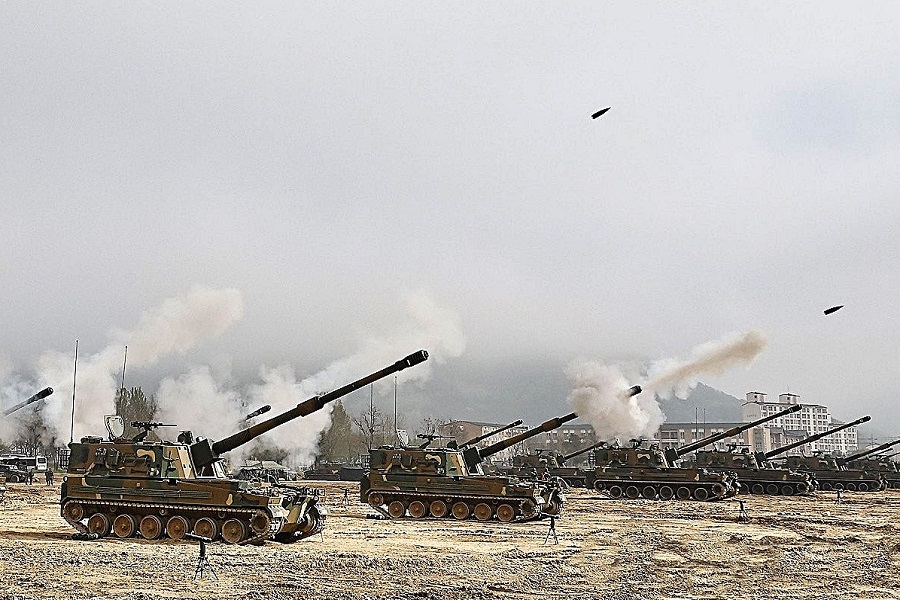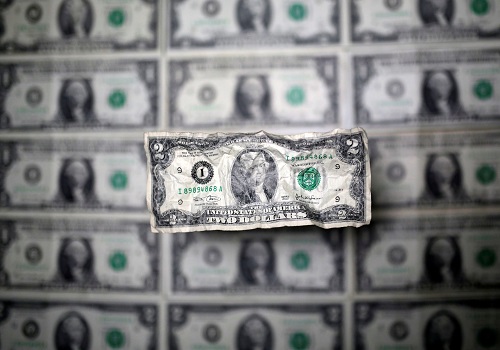Gold trading range for the day is 70910-71860. - Kedia Advisory

Gold
Yesterday, gold prices settled down by 0.45% at 71,256 as expectations for U.S. interest rate cuts diminished following a hawkish tone from the Federal Reserve's latest minutes. The minutes revealed a lively debate among policymakers about whether current rates are sufficiently restrictive to control inflation. While the consensus was to maintain interest rates at current levels for now, there were discussions about possible future hikes. This has led traders to increasingly doubt that the Fed will cut rates more than once in 2024, with the CME FedWatch Tool indicating about a 63% chance of a rate cut by November. Gold demand in India saw a slight improvement after prices corrected from a record high, but retail purchases remained below normal, prompting dealers to widen discounts. Indian dealers offered discounts up to $13 an ounce over official domestic prices, compared to last week's $10 discount. In China, premiums edged lower, ranging between $15-$20 per ounce over benchmark spot prices, down from $16-$30 last week. In Singapore and Hong Kong, bullion was sold at par to $2.50 and par to $2.00 premiums, respectively. In Japan, dealers sold gold at a $0.25-$0.50 premium, slightly lower than the previous week's range. Technically, the market is under long liquidation, evidenced by a 7.14% drop in open interest to settle at 6,884, while prices declined by 321 rupees. Gold currently finds support at 71,085, with a potential test of 70,910 if this level is breached. Resistance is expected at 71,560, and a move above this could see prices testing 71,860.
Trading Ideas:
* Gold trading range for the day is 70910-71860.
* Gold dropped as expectations for U.S. interest rate cuts began to fade.
* Fed's minutes showed a live debate among policymakers as to whether current rates are sufficiently restrictive to cool inflation.
* India's gold imports in 2024 could fall by nearly a fifth from the previous year.
Silver
Yesterday, silver prices edged up by 0.12%, closing at 90,548, amid ongoing concerns about persistent inflation and elevated interest rates. The rise in silver was driven by robust U.S. economic data, which heightened worries about inflation and the Federal Reserve's future rate path. U.S. business activity expanded at its fastest pace in over two years in May, and weekly jobless claims fell more than expected, intensifying pressure on the Fed to maintain higher interest rates for a prolonged period. Following these economic indicators, traders delayed the anticipated timing for the first Federal Reserve rate cut, moving expectations from November to December. Atlanta Fed President Raphael Bostic emphasized that there remains considerable upward pressure on prices, suggesting that the central bank might need to wait longer before cutting interest rates. Cleveland Fed President Loretta Mester, reflecting on nearly 40 years of service, noted that the unprecedented economic conditions following the COVID-19 pandemic introduce significant uncertainties. She implied that the Federal Reserve's usual precision in economic forecasting might be less effective in such an unpredictable environment. Technically, the silver market is experiencing short covering, indicated by a 0.47% drop in open interest, settling at 24,854 contracts, while prices increased by 111 rupees. Silver is finding support at 90,130, with a potential test of 89,705 levels if it drops further. On the upside, resistance is expected at 91,215, with a move above potentially testing 91,875. This technical outlook suggests that while silver may face some downward pressure, there is also potential for price increases, depending on future economic data and central bank actions.
Trading Ideas:
* Silver trading range for the day is 89705-91875.
* Silver settled flat amid anxiety over sticky inflation and high interest rates.
* Hawkish comments from another Federal Reserve official weighed on bullion prices.
* U.S. business activity grew at its fastest pace in more than two years in May
Crudeoil
Yesterday, crude oil prices settled up by 1.16% at 6,471 as market participants speculated on potential output cut extensions by major producers to address global oversupply concerns. The Energy Information Administration (EIA) reported that U.S. gasoline demand reached its highest level since November, providing market support given that U.S. drivers account for around a tenth of global oil demand. However, stronger U.S. PMI data dampened expectations for Federal Reserve interest rate cuts, negatively impacting the outlook for the U.S. economy and energy demand. Additionally, the latest FOMC minutes revealed some Fed officials' willingness to raise rates if inflation spikes. U.S. weekly imports of crude oil from Mexico fell to a record low of 184,000 barrels per day (bpd), following state energy company Petroleos Mexicanos' strategy to cut exports and supply more to domestic refineries. In the week ending May 17, U.S. crude stocks and distillate inventories rose, while gasoline inventories fell. Crude inventories increased by 1.8 million barrels to 458.8 million barrels, contrary to expectations of a 2.5 million-barrel draw. Crude stocks at the Cushing, Oklahoma delivery hub also rose by 1.3 million barrels. Technically, the market is experiencing short covering, as evidenced by a 15.83% drop in open interest to settle at 7,191, while prices increased by 74 rupees. Crude oil is currently supported at 6,384, with a potential test of 6,297 if this level is breached. Resistance is anticipated at 6,519, and a move above this level could see prices testing 6,567.
Trading Ideas:
* Crudeoil trading range for the day is 6297-6567.
* Crude oil gains as market participants await potential output cut extensions.
* Gasoline demand in the U.S. reached its highest level since November
* The stronger US PMI data dampened expectations for Federal Reserve interest rate cuts.
Naturalgas
Yesterday, natural gas prices fell sharply by 4.7%, closing at 213, due to forecasts for lower demand in the coming weeks, an ongoing oversupply situation, and indications that recent high prices have encouraged drillers to increase output. This decline occurred despite expectations of higher demand next week, driven by an anticipated heat wave in Texas over the Memorial Day weekend. The financial firm LSEG reported that gas production in the Lower 48 U.S. states averaged 97.5 billion cubic feet per day (bcfd) in May, down from 98.2 bcfd in April and a record 105.5 bcfd in December 2023. However, daily production increased by about 1.5 bcfd since hitting a 15-week low of 96.2 bcfd on May 1. Overall, U.S. gas production remains approximately 8% lower in 2024 after several energy companies, including EQT and Chesapeake Energy, delayed well completions and reduced drilling activities following significant price drops to 3.5-year lows earlier in the year. Meteorologists predict warmer-than-normal weather across the Lower 48 states from May 24-28 and June 3-8, with near-normal temperatures from May 29-June 2. LSEG forecasts gas demand, including exports, to stay around 92.7 bcfd this week and next, before decreasing slightly to 92.2 bcfd in two weeks. The forecast for next week is higher than previously expected. Technically, the market is experiencing fresh selling pressure, evidenced by a 36.29% increase in open interest to 12,764 contracts, while prices declined by 10.5 rupees. Natural gas is finding support at 207.5, with a potential test of 202.1 levels if it falls further. On the upside, resistance is anticipated at 221.8, with a move above potentially testing 230.7.
Trading Ideas:
* Naturalgas trading range for the day is 202.1-230.7.
* Natural gas fell on forecasts for lower demand in two weeks, an ongoing oversupply of gas in storage
* Gas output in the Lower 48 U.S. states fell to an average of 97.5 billion cubic feet per day (bcfd) so far in May.
* U.S. gas production was still down around 8% so far in 2024 after several energy firms delayed well completions
Copper
Yesterday, copper prices settled down by 0.76% at 891.65 as physical demand in China weakened. Since mid-May, the usual premium for importing copper into China has turned into a discount. Copper inventory in warehouses monitored by the Shanghai Futures Exchange (SHFE) remains near a four-year high at around 300,000 tons, with seasonal withdrawals being slower than usual. This high inventory level reflects waning demand after copper prices surpassed $10,000 per ton. The global refined copper market exhibited a surplus of 125,000 metric tons in March, down from a 191,000 metric tons surplus in February, according to the International Copper Study Group (ICSG). World refined copper output in March was 2.33 million metric tons, while consumption was 2.20 million metric tons. When accounting for changes in inventory in Chinese bonded warehouses, the surplus stood at 138,000 metric tons in March, compared to 221,000 metric tons in February. China's refined copper production in April rose by 9.2% year-on-year to 1.14 million metric tons, with average daily output at 38,000 tons, slightly higher than the 37,000 tons average in March. This increase occurred despite major smelters agreeing to reduce output in March due to shortages of copper ore and concentrate. Technically, the market is experiencing fresh selling, evidenced by a 16.64% increase in open interest to settle at 4,878, while prices declined by 6.8 rupees. Copper currently finds support at 886.5, with a potential test of 881.2 if this level is breached. Resistance is anticipated at 901.3, and a move above this level could see prices testing 910.8.
Trading Ideas:
* Copper trading range for the day is 881.2-910.8.
* Copper prices dropped as physical demand in China, has been dampened.
* China's refined copper production in April rose 9.2% from the prior year to 1.14 million metric tons
* Copper inventory remained at a four-year high in China.
Zinc
Zinc prices experienced a modest uptick of 0.22% yesterday, settling at 271.5, supported by a narrowing global surplus in the zinc market. Data from the International Lead and Zinc Study Group (ILZSG) revealed that the global zinc surplus decreased to 52,300 metric tons in March from 66,800 tons in February. Over the first three months of the year, the global surplus stood at 144,000 tons, a reduction from 201,000 tons during the same period last year. In April 2024, China's refined zinc output decreased month-on-month by 3.99%, totaling 504,600 metric tons, with a year-on-year decline of 6.56%. However, the cumulative output from January to April remained relatively stable at 2.1 million metric tons, aligning with expectations. Domestic zinc alloy production in April increased to 95,500 metric tons, reflecting a rise of 1,100 metric tons from the previous month. Output from domestic smelters declined due to routine maintenance and equipment issues in various regions, leading to a notable decrease in overall production. On the economic front, China's retail sales in April rose by 2.3% year-on-year, falling short of market expectations of 3.8%. This marked the 15th consecutive month of retail trade growth but represented the softest gain in the sequence, indicating potential moderation in consumer spending. Technically, the zinc market witnessed fresh buying, with a notable 21.99% increase in open interest, settling at 3,023 contracts. Prices rose by 0.6 rupees, with support seen at 269.3 and potential testing of 267 levels if this level is breached. Resistance is expected at 273.9, with a move above potentially leading to testing of 276.2.
Trading Ideas:
* Zinc trading range for the day is 267-276.2.
* Zinc gains as the global zinc market surplus fell to 52,300 metric tons in March.
* In April 2024, China's refined zinc output was 504,600 mt, a month-on-month decrease of 3.99%.
* In April, the output of domestic smelters declined, mainly due to routine maintenance of smelters.
Aluminium
Yesterday, aluminium prices settled up by 0.82% at 241.1 amidst supply setbacks. Rio Tinto's declaration of force majeure on alumina cargoes from its Australian refineries due to gas shortages added to concerns about supply, given Australia's status as the world's second-largest producer of alumina. Additionally, uncertain meteorological conditions in China's Yunnan region, a key aluminium-producing area, threatened the availability of hydroelectric power for producers, further impacting supply. Meanwhile, on-warrant aluminium LME stocks in Port Klang, Malaysia, plunged after the key delivery deadline of May 15th, following trading giants' moves to take advantage of new contract rules post-US and UK sanctions on Russian aluminium. This jeopardized availability for clients reliant on specific non-Russian contracts. Data from the International Aluminium Institute (IAI) showed that global primary aluminium output in April rose by 3.3% year-on-year to 5.898 million tonnes. China's imports of unwrought aluminium and products surged by 72.1% year-on-year to 380,000 metric tons in April, reaching 1.49 million tons in the first four months, an 86.6% increase from the previous year. Specific origin data for imports will be released by China soon. Notably, Russian imports totaled 392,775 tons in the first quarter, a significant increase from the previous year. Technically, the market is experiencing fresh buying, with a 12.62% increase in open interest to settle at 3,248, while prices rose by 1.95 rupees. Aluminium currently finds support at 238.2, with a potential test of 235.3 if this level is breached. Resistance is likely at 243.5, and a move above could see prices testing 245.9.
Trading Ideas:
* Aluminium trading range for the day is 235.3-245.9.
* Aluminium gains amid setbacks to supply.
* Gas shortages drove mining giant Rio Tinto to declare force majeure on alumina cargoes from its Australian refineries, raising concerns about supply.
* On-warrant aluminum LME stocks in Port Klang, Malaysia, plunged after the key delivery deadline of May 15th.
Cottoncandy
Cotton prices remained unchanged at 58,280, with sluggish milling demand still a concern amidst muted global demand for yarn. However, the downside was limited as India's cotton continues to attract strong demand from buyers in countries like Bangladesh and Vietnam. Prospects of improved crops in countries like Australia also contributed to the market sentiment. The International Cotton Advisory Committee (ICAC) projected increases in cotton-producing areas, production, consumption, and trade for the upcoming 2024-25 season. In India, cotton stocks are expected to decline by nearly 31% in 2023/24, reaching their lowest level in over three decades due to lower production and rising consumption. This decrease in stockpiles is anticipated to constrain exports from the world's second-largest producer, supporting global prices while potentially affecting the margins of local textile companies. India's cotton production for the current season is estimated to be 30.97 million bales, slightly lower than the previous year, while consumption is expected to rise. Additionally, cotton exports from India for the season are projected to increase to 2.20 million bales. Looking ahead to the 2024/25 marketing year, India's cotton production is estimated to decrease slightly to 25.4 million bales due to farmers shifting acreage to higher return crops. However, mill consumption is expected to increase, supported by improving demand for yarn and textiles in major international markets. With the recent reduction in import duty on extra-long staple (ELS) cotton, imports are forecasted to rise. Technically, the cotton market witnessed fresh selling with a significant increase in open interest, indicating potential downward pressure. Support is seen at 58,080, with resistance at 58,520. This technical overview suggests a cautious stance for Cottoncandy, influenced by both demand-supply dynamics and market sentiment.
Trading Ideas:
* Cottoncandy trading range for the day is 57890-58770.
* Cotton dropped as sluggish milling demand is still concerns amid muted demand of yarn.
* U.S. ending stocks projected 1.3 million bales above 2023/24 level
* Global supplies in 2024/25 projected to be higher than previous year
* In Rajkot, a major spot market, the price ended at 27292.85 Rupees dropped by -0.16 percent.
Turmeric
Turmeric prices surged by 2.96% to settle at 19,972 as farmers withheld stocks in anticipation of further rises. However, this upside was tempered by increased supplies at the end of the harvesting season. The prevailing heatwave across India poses a threat to crop yields, exacerbating the supply crunch and supporting prices. The India Meteorological Department forecasts continued hot weather, with rainfall in southern regions significantly below normal levels. Despite production estimates for 2023-24 indicating a slight decrease to 10.74 lakh tonnes compared to the previous year, demand destruction occurred as prices soared. Turmeric-growing regions like Sangli, Basmat, and Hingoli are experiencing strong demand for quality produce in anticipation of an increase in sowing area. Export data for Apr-Mar 2024 showed a 4.75% decrease in turmeric exports compared to the previous year, totaling 162,018.50 tonnes. However, March saw a 34.90% increase in exports compared to February. Imports during the same period declined by 12.71%, amounting to 14,637.55 tonnes, with March showing a notable increase compared to the previous year. In the major spot market of Nizamabad, prices dropped slightly to 17,988.65 Rupees by -0.22%. Technically, the market witnessed short covering, with a 1.09% drop in open interest to settle at 15,850, while prices surged by 574 rupees. Turmeric is currently supported at 19,392, with a potential test of 18,810 if this level is breached. Resistance is likely at 20,364, and a move above could see prices testing 20,754.
Trading Ideas:
* Turmeric trading range for the day is 18810-20754.
* Turmeric rose as farmers are holding back stocks in anticipation of a further rise.
* The current heat wave could severely damage the crop yield, further contributing to the supply crunch.
* The Ministry of Agriculture first advance estimate for turmeric production in 2023-24 is estimated at 10.74 lakh tonnes
* In Nizamabad, a major spot market, the price ended at 17988.65 Rupees dropped by -0.22 percent.
Jeera
Jeera prices saw a modest uptick of 0.2%, settling at 29,390, driven by a slowdown in arrival pace as stockists and farmers held back their stocks for better price realization. The arrival of jeera at major APMC mandis across India increased slightly in the first week of May compared to the prior week, indicating cautious market sentiment. Export demand is expected to strengthen further, supported by robust demand and aggressive buying by stockists, particularly as global buyers show a preference for Indian jeera amidst tightening global supplies. Increased sowing areas and favorable weather conditions in key cumin-producing regions of Gujarat and Rajasthan have led to a significant increase in production, with Gujarat estimated to achieve a record production of 4.08 lakh tonnes. This surge in production is expected to lead to a substantial increase in cumin exports, with estimates suggesting exports reaching around 14-15 thousand tonnes by February 2024. However, despite the optimistic outlook for production and exports, jeera exports during Apr-Mar 2024 saw a decline of 13.53% compared to the same period last year, totaling 152,189.32 tonnes. Nevertheless, there was a notable increase in exports in March 2024, indicating potential recovery in international demand. Technically, the jeera market witnessed fresh buying with a slight increase in open interest by 0.57%, settling at 3,168 contracts. Prices rose by 60 rupees, indicating positive market sentiment. Support is seen at 28,700, with a potential test of 28,010 levels if prices decline further. Resistance is expected at 29,980, with a move above potentially testing 30,570.
Trading Ideas:
* Jeera trading range for the day is 28010-30570.
* Jeera prices gained as arrival pace has started slowed down.
* Global buyers preferred Indian jeera with tightening global supplies.
* New arrivals have started in Gujarat since last 20-25 days and new arrivals have started in Rajasthan also since last 15 days.
* In Unjha, a major spot market, the price ended at 30327.8 Rupees dropped by -0.12 percent.
Views express by all participants are for information & academic purpose only. Kindly read disclaimer before referring below views.










More News

Buy Dhaniya Apr @ 8100 SL 8000 TGT 8200-8300. NCDEX - Kedia Advisory












